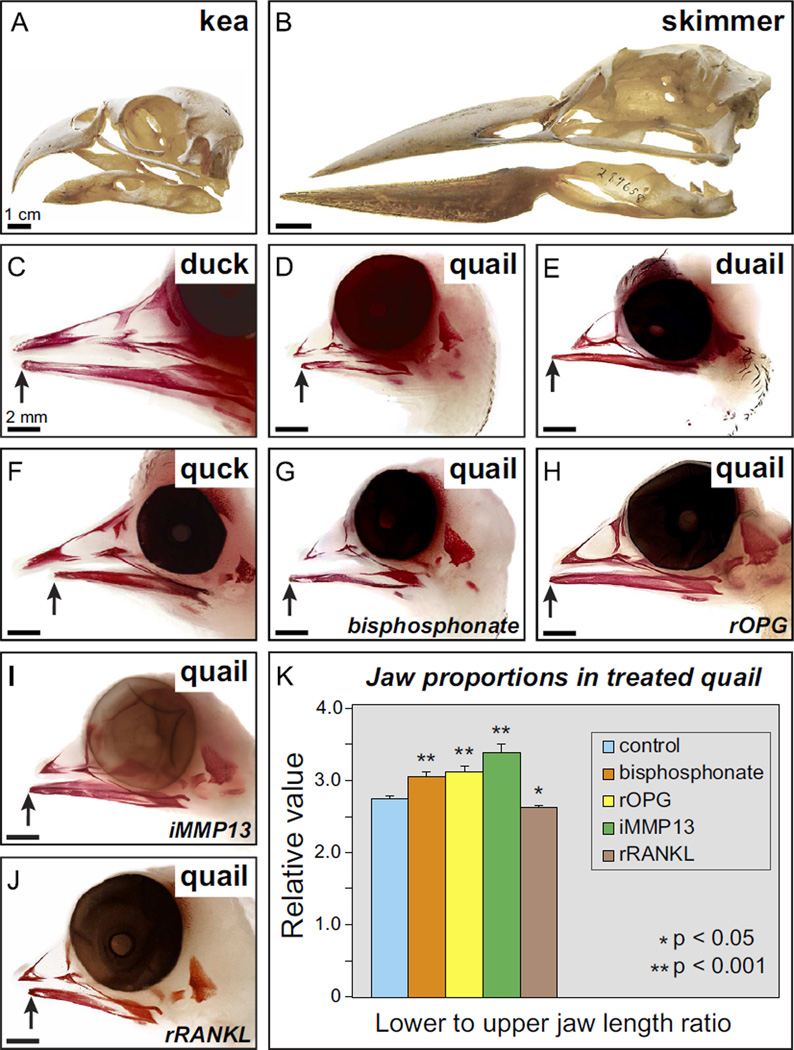Fig. 4.
Bone resorption regulates jaw length. Differences in upper versus lower beak length occur naturally in some adult birds such as the (A) kea (Nestor notabilis), which has a shorter lower jaw, and (B) black skimmer (Rynchops niger) which has a longer lower jaw. (C and D) Quail and duck beak skeletons at HH39 stained with alizarin red showing differences in jaw length. Note the normal relations of the upper and lower portions that approximate one another at the distal tip, with the lower jaw being slightly shorter than the upper (arrows). (E) The beak is lengthened in duail when lower jaw NCM comes from a duck (n=4), and (F) shortened in quck when lower jaw NCM comes from a quail (n=7), demonstrating that NCM regulates size. (G) Quail treated at HH33 with a bisphosphonate (n=14), (H) recombinant OPG (rOPG) protein (n=8), and (I) an MMP13 inhibitor (iMMP13) have longer beaks, especially the lower jaw (n=6). (J) rRANKL protein treatments at HH33 decreases jaw length (n=8). (K) Quantifying jaw size reveals significant treatment-dependent increases and decreases in length relative to control embryos (n=12).

